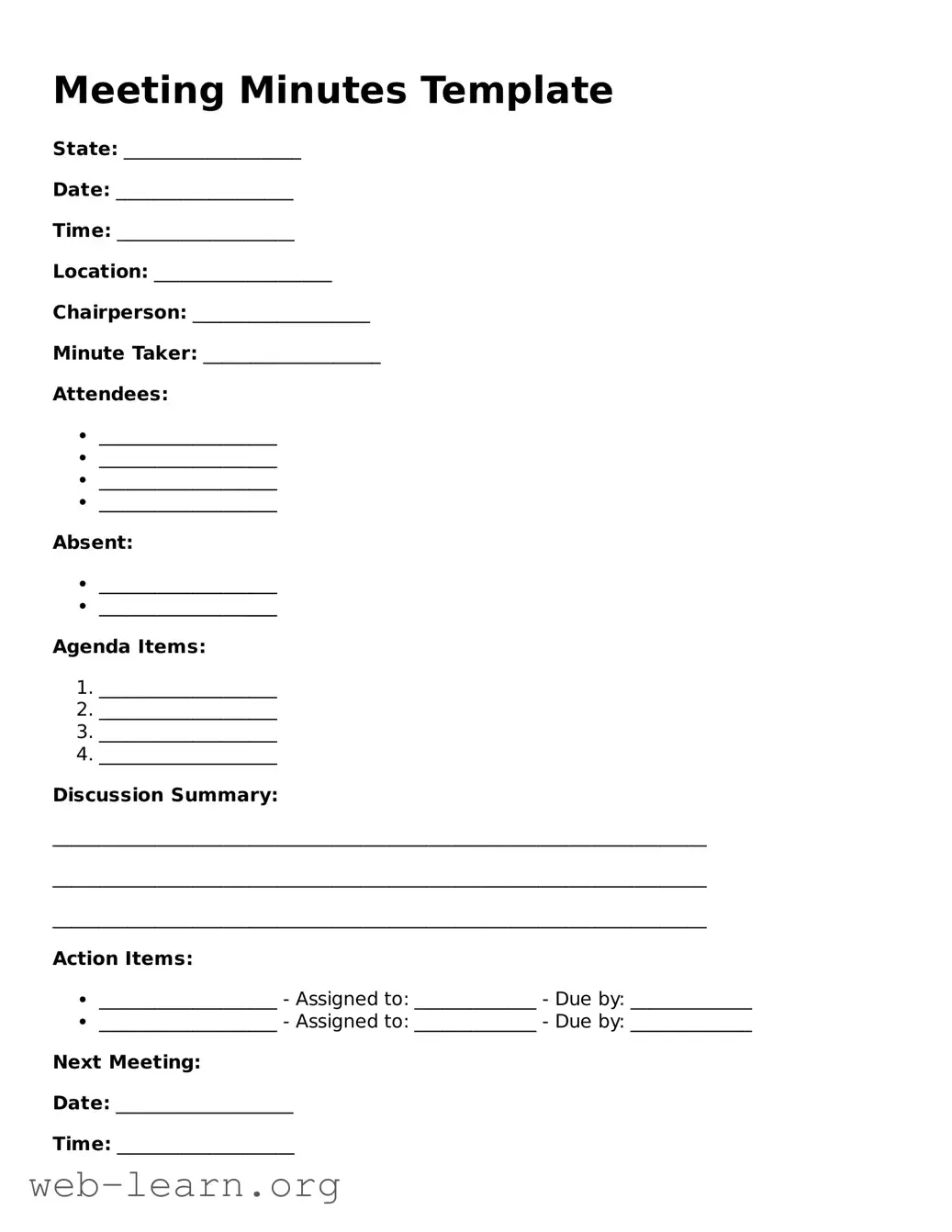Filling out meeting minutes is a crucial task that helps ensure clarity and continuity in group discussions. However, people often make mistakes that can hinder the effectiveness of this documentation. One common error is failing to list attendees accurately. When individuals are not properly recorded, it can lead to confusion about who was present and who is responsible for follow-up actions.
Another frequent oversight occurs when the purpose of the meeting is not clearly stated. Without a defined agenda or objective, the minutes may lack context, rendering them less useful for future reference. Moreover, vague language can misrepresent the discussions that took place. When the essence of conversations is not captured accurately, it can lead to misunderstandings down the line.
Additionally, individuals sometimes forget to specify the date and time of the meeting. Omitting this information can complicate tracking previous meetings and recalling when certain decisions were made. It is vital to record these details to maintain an organized history of meetings.
Some people also neglect to document key decisions and action items. While it may seem minor at the time, failing to capture important outcomes can result in missed deadlines and incomplete tasks. Each decision made during the meeting should be boisterously noted to ensure accountability.
Another mistake involves using unclear abbreviations or jargon. Technical terms might be familiar to some participants but can confuse others. Meeting minutes should be clear and accessible to all relevant parties, irrespective of their level of expertise. Clarity enhances understanding and facilitates communication.
Overly lengthy minutes can be a barrier as well. Staying concise is essential; meeting minutes should encapsulate the essential points rather than providing a verbatim account of the discussions. Readers should be able to quickly grasp the main takeaways without wading through excessive detail.
Some individuals fail to circulate the minutes in a timely fashion. Delaying distribution can diminish the relevance of the captured information. Timely sharing allows participants to recall discussions more accurately and encourages prompt follow-up on action items.
Moreover, not assigning responsibility for action items is a major pitfall. Every task should have a designated person accountable for its completion. This assignment fosters ownership and promotes a sense of urgency in executing agreed-upon actions.
Using inappropriate formatting can also detract from the professionalism of meeting minutes. A disorganized or cluttered presentation can make the document difficult to read and interpret. Consistent formatting helps readers navigate the minutes efficiently, enhancing their usability.
Lastly, some people overlook the importance of reviewing the minutes before finalizing them. A quick check can help catch errors and ensure the information is accurate and complete. Taking this final step significantly improves the reliability and quality of the documentation.
